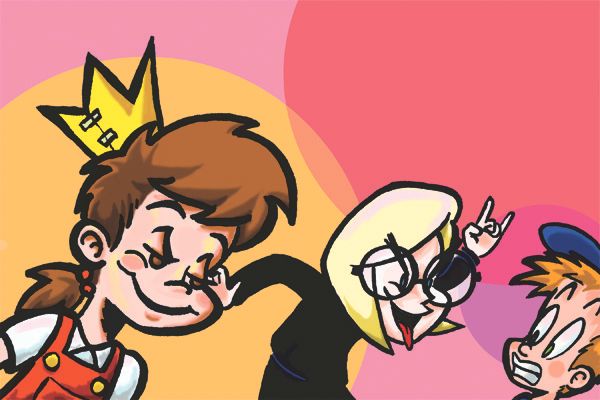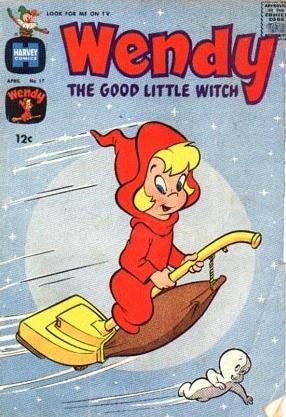
Christine Smith is a San Francisco Bay Area cartoonist, freelance illustrator, and activist. Her webcomics Eve’s Apple and The Princess tell the stories of a trans woman and a young trans girl. I think the comics are funny and human while also engaging with some very real issues facing trans folks.
I interviewed Christine Smith about writing comics about trans characters, her art style, and place in the world of webcomics.
Jos Truitt: What inspired you to tell the stories of a trans woman and now a young trans girl in web comics form?
Christine Smith: At the risk of sounding glib, ‘These are the stories of my people’.
Okay, that may be overstating the case, but so often we in the transgender/transsexual communities have lives that are invisible to the public eye. When we are visible we’re usually fetishized, and when we’re NOT fetishized….. we’re idealized in ways that obscure the tensions in our gender identities. Movies, for instance, will often cast a cisgender woman in a transgender role in order to normalize the character. The sad flip side of THAT coin is that the assumption that women with bodies like ours, which are often broad in the shoulders, taller than average, narrower in the hip, and with deeper voices are presumed to be abnormal and unsavory. I had seen a few webcomics about transfolk on the web, and although they’re wonderful in their own rights, the characters all hew to the model of being traditionally beautiful/handsome in the mode of the gender they present in. As is true with cisgender women, some few will be deemed beauty queens, but the rest of us never find our own beauty celebrated in the media. All of this made we want to create Eve, a beautiful woman, one who is fat, and, who is taller than anyone else in the room. That I share these qualities probably isn’t a coincidence.
Over a year after I started Eve’s Apple, I became aware of the growing trans youth movement. The psychological profession has theorized that a great majority of transpeople suffer from post traumatic stress disorder….. even those who came from non-abusive and otherwise supportive backgrounds. The cause of that, the thought goes, is that forcing a child to conform to a gender identity that is not native to their souls is a traumatic upbringing in and of itself. Can you imagine telling a child as young as five that they had to suppress and lie about who they knew themseves to be at the core of their being? This is what society does to trans children, this is what happened to me, and it’s a tragedy. The irony in all this, of course, is that the people who love us most do this to us…… for absolutely the most compassionate and loving reasons in the world. They know that the world is severe to those who are different, they have a glimpse of the torment that would face their child if they continued to express themselves in what would be seen as a cross-gender manner, and they want to spare thier child that pain. They want to protect their child. In other word, often our parents and adult role models do absolutely the worst thing they can to us, for absolutely the best reasons in the world. So when I heard of the story of little Josie Romero, a transgirl, now eight years old, who is being raised by understanding parents, and when I learned of Kim Pearson and Trans Youth Family Allies, which offer support to families and education to school, it struck me as a thing of amazing beauty. I wept from the beauty, just hearing that some families are beginning to learn, and have the resources, to support their transgender children. So this is what inspired Sarah in my head. I’d meant her to be a minor character in Eve’s Apple. but it became rapidly apparent to me that she had more to say than could be said in Eve’s, and she needed her own strip. The amazing reaction I’ve gotten from some very wonderful and gracious people, shows me that there is growing interest in these children, and how to raise them with integrity and dignity.
JT: Can you tell me a little bit about the evolution of your art style?
 CS: It took me a long time to learn to draw my characters simply! As a kid, I was greatly inspired by the old Looney Tunes character designs, and I feel my real strength is in character design. Over the years I tried MANY times to start a strip…. the trouble is that I had over designed the characters so much that I couldn’t easily render the characters again and again, in different sizes and from different angles. If you compare the best animation…. the Looney Tunes, Classic Disney….. to the best comic strips…. Krazy Kat, Peanuts, Calvin & Hobbes…. you’ll find that those native to the newspaper page are drawn with greater simplicity, because too many lines will clutter the look. So I started off with horribly overdrawn characters that looked cluttered in the space of small panels.
CS: It took me a long time to learn to draw my characters simply! As a kid, I was greatly inspired by the old Looney Tunes character designs, and I feel my real strength is in character design. Over the years I tried MANY times to start a strip…. the trouble is that I had over designed the characters so much that I couldn’t easily render the characters again and again, in different sizes and from different angles. If you compare the best animation…. the Looney Tunes, Classic Disney….. to the best comic strips…. Krazy Kat, Peanuts, Calvin & Hobbes…. you’ll find that those native to the newspaper page are drawn with greater simplicity, because too many lines will clutter the look. So I started off with horribly overdrawn characters that looked cluttered in the space of small panels.
Over time, I came to look to the house styles of Archie Comics (Archie, Jughead, Betty & Veronica) and Harvey Comics (Caspar the Friendly Ghost, Wendy The Good Little Witch, Richie Rich) as really successful examples of characters designed to look distinctly individual while at the same time being drawn very simply. Let’s face it… the difference between Archie and Jughead are just a few bare lines….. but they’re used to great effect! It’s about doing the most with the least….. and in The Princess I’ve really taken that to heart and I feel my art has in some way evolved by tossing out whatever’s not needed..
JT: In both Eve’s Apple and The Princess we find out transphobic characters are actually crushing on our transgender heroes. Do you think uncomfortable attraction is the root of a lot of transphobia?
CS: Oh, yes. I’ve been off and on involved with the trans murder issue over the years. One of the things that strike me, again and again, is that you find that the murderer had sex with the victim before murdering them. Alas, this has led to the ‘trans panic defense’ where people have, often successfully, evaded justice by claiming the shock of discovering that the victim was trans was so great as to make them lose control of themselves. You see that over and over again. Certainly, you saw it in the Gwen Araujo case. To go back a bit, look at the Chanel Pickett in Watertown, Massachusetts. WIlliam Palmer, the killer, picked Chanel up in a bar that was known as a cruising ground where cisgender men could meet transwomen. Other transwomen there attest that he had previously has sexual relationships with them, and eyewitness accounts reveal him telling Ms. Pickett, “You’re the best-looking pre-op transsexual I’ve ever seen.” He then took her moments and, in a few hours, had strangled her to death.
I think there’s a fear of “If I’m attracted to a woman who has or had a penis, what does that make me? Does it make me gay if I’m a straight male identified? If I’m a lesbian identified, does it make me straight?” This has a huge impact on creating a culture of transphobia. It affects transmen in exactly the same manner.
Bisexuals and transgender folk have at various times described themselves as being allied communities. I wonder if part of the reason that bisexuals have historically seemed more comfortable with us than monosexuals is because in being attracted to us, their understanding of themselves is not challenged.
JT: Your stories are funny but they also deal with some pretty serious topics. How do you balance the humor and accessibility of your strips with the trans issues you cover?
CS: Honestly, nobody’s more surprised than me that these stories are accessible!
I’m guessing that it helps for me to have a sense of humor about the troubles I’ve have as a transwoman. Also, When I’m making a point, I try to make it in a character-driven way and avoid the soapbox. I could stand on a soapbox and rant all day… but that’s for the public square, not for the comics page! When I make a strip, I try to tell the stories of the people in it first and foremost. I try not to whip up a situation in order to showcase an issue. I try to drop these characters who have such-and-such a point of view together in such-and-such a situation, and let them work it out between them. Or fail to.
JT: The mainstream comics industry is dominated by male creators and characters and has a sad history of misogyny. The internet has proved to be a place where female comics artists and female-centric stories can gain recognition and a following. How has it been for you to tell stories about trans folks in the world of webcomics?
CS: It’s amazing. I’m probably jinxing myself, but I started Eve’s in ’08, and I haven’t had hate mail or even one hateful comment Not one. Everyone I’ve gotten feedback from has been amazingly positive, and I’ve gotten a few messages from people who thank me for what I’m doing and share how it’s helped them with their own difficulties, particularly with The Princess. I’ve had mothers thank me for the strip, for providing a place where their children’s gender experiences are normalized. What more can someone ask for in life than to be able to do that for someone? It’s an amazing privlege, and quite humbling and happy making when I hear from parents about the meaning of the strip for their families. I draw The Princess out of compassion for the child who I was back then, and I draw it to send a little love out to the little transgender Princesses and Princes growing up today.

Join the Conversation